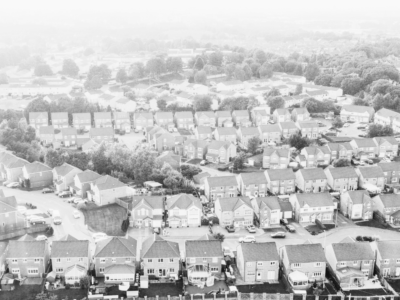In an era of heightened awareness about the impact of human activity on the environment, the UK is on the brink of losing more than 1,000 ancient woodlands, as a direct result of new developments for businesses and housing, according to a report by the Woodland Trust.
Projects such as HS2, as well as up to 175 housing development projects, are some of the main culprits putting these woodlands at risk. The HS2 project was singled out in particular, with the Woodland Trust estimating that it would put as many as 108 woodlands at risk of being damaged or completely lost.
This ecological crisis reflects the dilemma faced by policymakers, who are facing a tough choice between satiating the increasing demands for affordable housing by a growing population, or doing all they can to protect the natural environment, no matter what the cost.
Irreplaceable woodlands could be lost
Areas of woodland that have remained untouched for a large part of human history are now on the line, putting an array of ecosystems in danger, the Woodland Trust warned. Their warning came with a stark figure, suggesting that as many as 800 ancient woodlands had been lost or suffered damage since 1999.
However, encouragingly, the Trust claimed that bold actions it had undertaken over the years on a local level had ensured that as many as 1,101 ancient woodlands had been recorded as saved since 1999. Despite this, the Trust could not say for sure whether any of these preserved woodlands would remain untouched or unharmed in the years to come.
The Woodland Trust has only been able to protect woodlands in this way, by working with 60 active threat detectors who work in the field.
These detectors, ranging from stay-at-home parents to young people looking for work experience, work around the clock, keeping a close eye on specific stretches of ancient woodland, while also carrying out the necessary research, to ensure that the Trust stays up to date on local planning developments that could seriously impact the health of these ancient woodlands.
Grassroots ways of saving woodland
In addition, the Trust has opened itself up to the general public, encouraging anyone to report potential threats to ancient woodland in their local area, trying to foster a grassroots movement to protect the UK’s natural environment.
Speaking exclusively to Property Notify, Dee Smith, senior public relations officer at the Woodland Trust, claimed: “We are concerned that indirect impacts [from increased housebuilding] will not be considered as strongly, and as such, the pressures of urban development will lead to the more long-term deterioration of more ancient woods.”
Ms Smith added: “Something to consider is that Natural England are updating the Ancient Woodland Inventory for England. This will be of benefit, as it removes any doubt as to what is and isn’t ancient woodland. However, it might mean we are made aware of more threats to ancient woodland, so this might have an impact on numbers.”
Environmental concerns in focus
News of a threat to over 1,000 ancient woodlands across the UK comes as Australia continues to battle with one of its worst bushfires in recorded history. Having originally started as long ago as June 2019, the 2019-20 Australian bushfire has been raging predominantly across the south-east of the country.
As of this week, it is estimated that as many as 46 million acres of land have been burnt, making the bushfire one of the deadliest ever seen in Australia, having resulted in at least 29 people losing their lives. As many as a billion animals have been estimated to have been killed, meaning some endangered species could even be driven to extinction, directly as a result of the fires.
The bushfires are likely to have an adverse effect on the Australian economy, especially due to the impact on the housing market. With up to 5,900 buildings destroyed, the bushfire crisis could tip the Australian economy into its first recession since the 1990s, and reduce demand in the housing market, causing prices to fall and defaults to rise.






















Comments